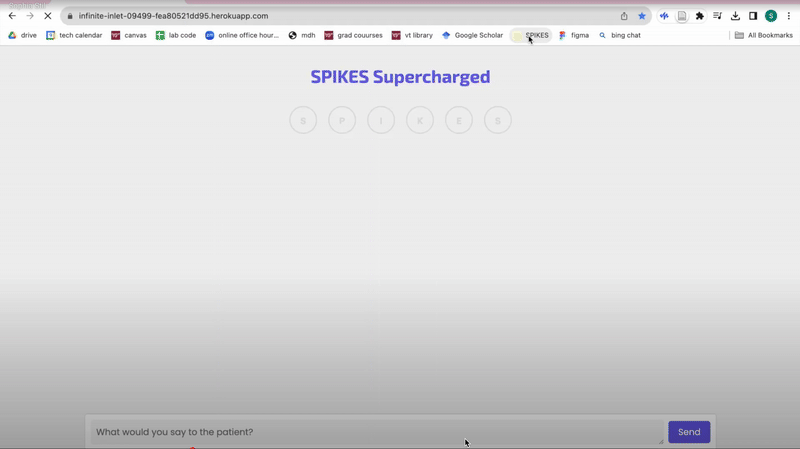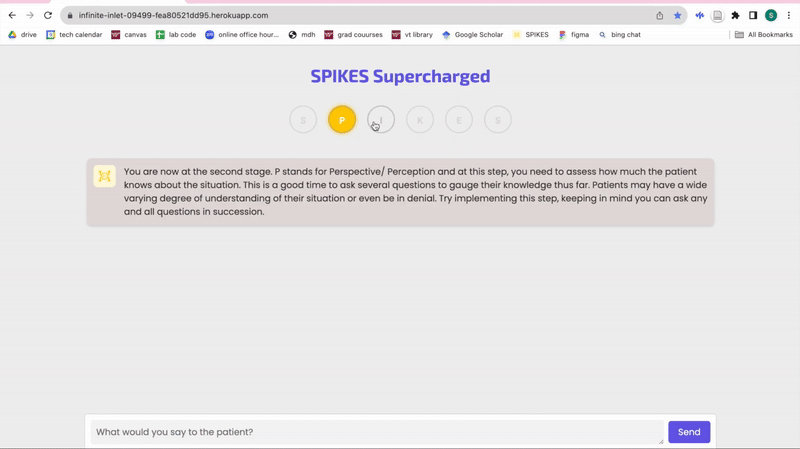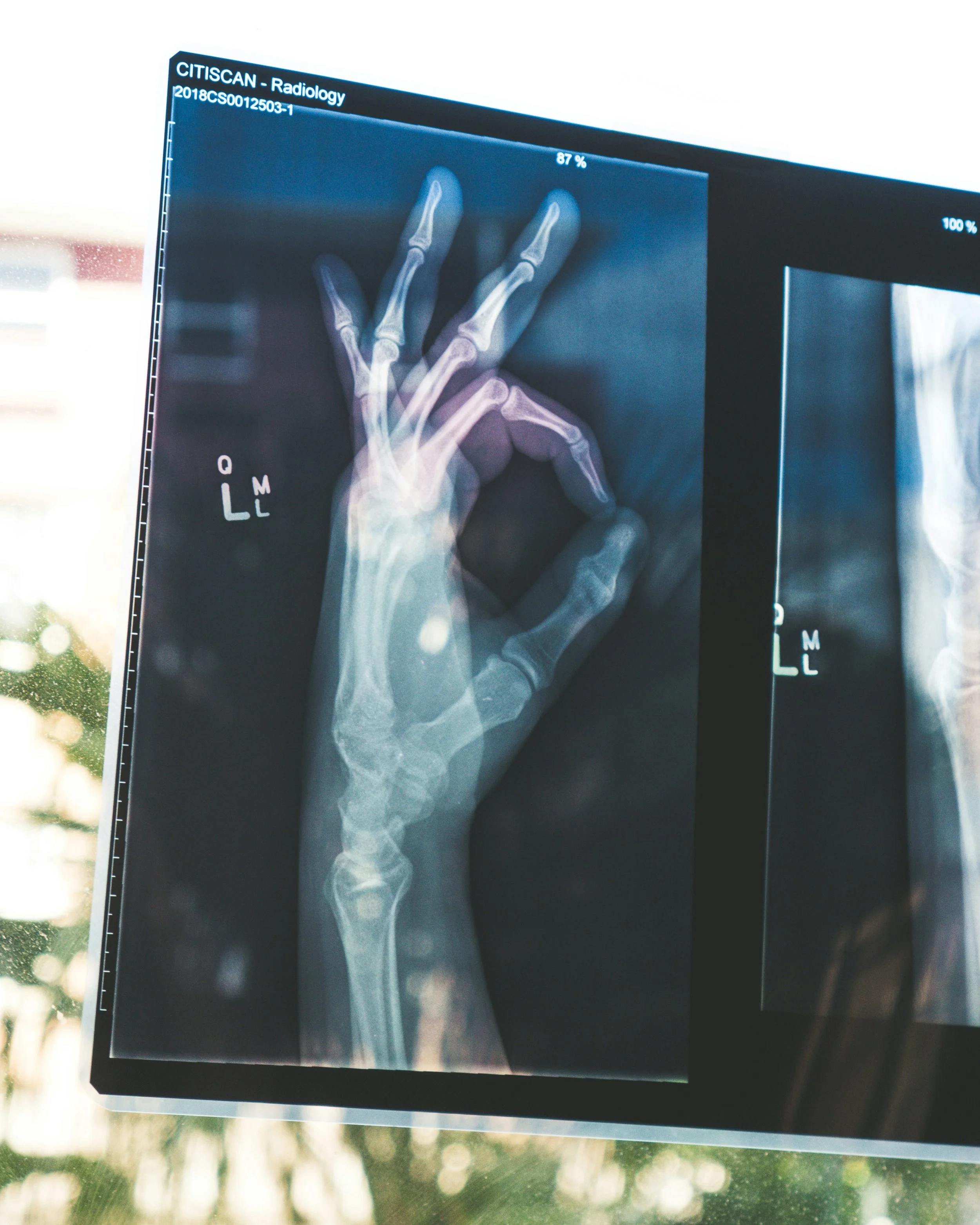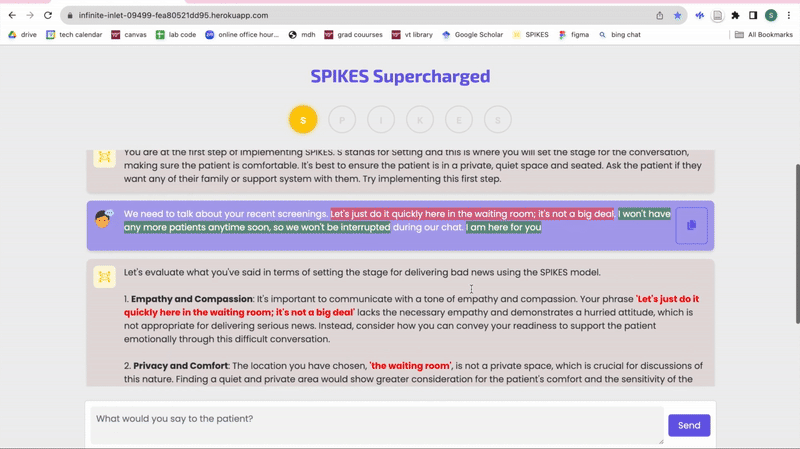SPIKES Supercharged
LLM-powered website
We created a GPT-backed website that meant to help medical professionals better their empathy skills when breaking bad news.
Timeline
August 2023 - December 2023
User
Medical professionals/ trainees
Overview
SPIKES Supercharged is a GPT-4 powered training tool designed to help medical professionals practice delivering difficult news to patients with empathy. Built as part of my Human-Centered Computing graduate research, this project combines medical training frameworks with large language models to explore how AI can support empathetic doctor–patient communication.
Research and Backround
Research shows that while nearly all physicians recognize the importance of empathy when delivering bad news, fewer than half feel adequately trained.
The SPIKES protocol (Setting, Perception, Invitation, Knowledge, Empathy, Strategy) is widely used in medical training to guide this process.
We identified a gap: despite the rise of AI in healthcare, no tools yet existed that integrate LLMs to help professionals learn and practice empathy in high-stakes conversations.
Design Goals
Our goal was to create an interactive, user-driven system where medical students and professionals could practice SPIKES in a safe, repeatable way. We designed for:
Active learning through modular steps of the SPIKES protocol
Feedback, not answers, so users could iteratively improve
Flexibility to create custom patient scenarios based on real or hypothetical cases, able to practice areas as needed
Accessibility via a simple, web-based interface
Early design prototype
Process and Iteration
We developed a prototype chatbot that walks users through each step of SPIKES, prompting them to respond as if they were addressing a patient. The system then provides tailored feedback, highlighting strengths and suggesting improvements.
Early user feedback from clinicians and students highlighted the need for more meaningful, interactive feedback. Based on this, we refined the system to support repeated practice, scenario customization, and deeper guidance on difficult modules.
Early testing identified a need for more actionable feedback from tool
User Experience (Scenario Walkthrough)
For example, a medical student named Sam practices telling a patient about a non-terminal breast cancer diagnosis. The tool guides Sam step by step—preparing the setting, gauging patient perception, explaining the diagnosis, and responding to emotions.
After Sam submits their response, the system evaluates it, gives constructive feedback, and allows them to retry until they are satisfied. This approach helps build SPIKES skills like muscle memory, while reducing the emotional load of real-world practice.
Medical student Sam can practice any stage in SPIKES independently based on their desired need for practice
User Testing and Reflection
We deployed an online survey to investigate user perceptions. The tool measured high in helpfulness, usefulness, and moderately well in interaction success.
"I think this would be great for medical students or students in other advanced practice programs (NPs, PAs, CNMs)."
— Anonymous User, User testing











